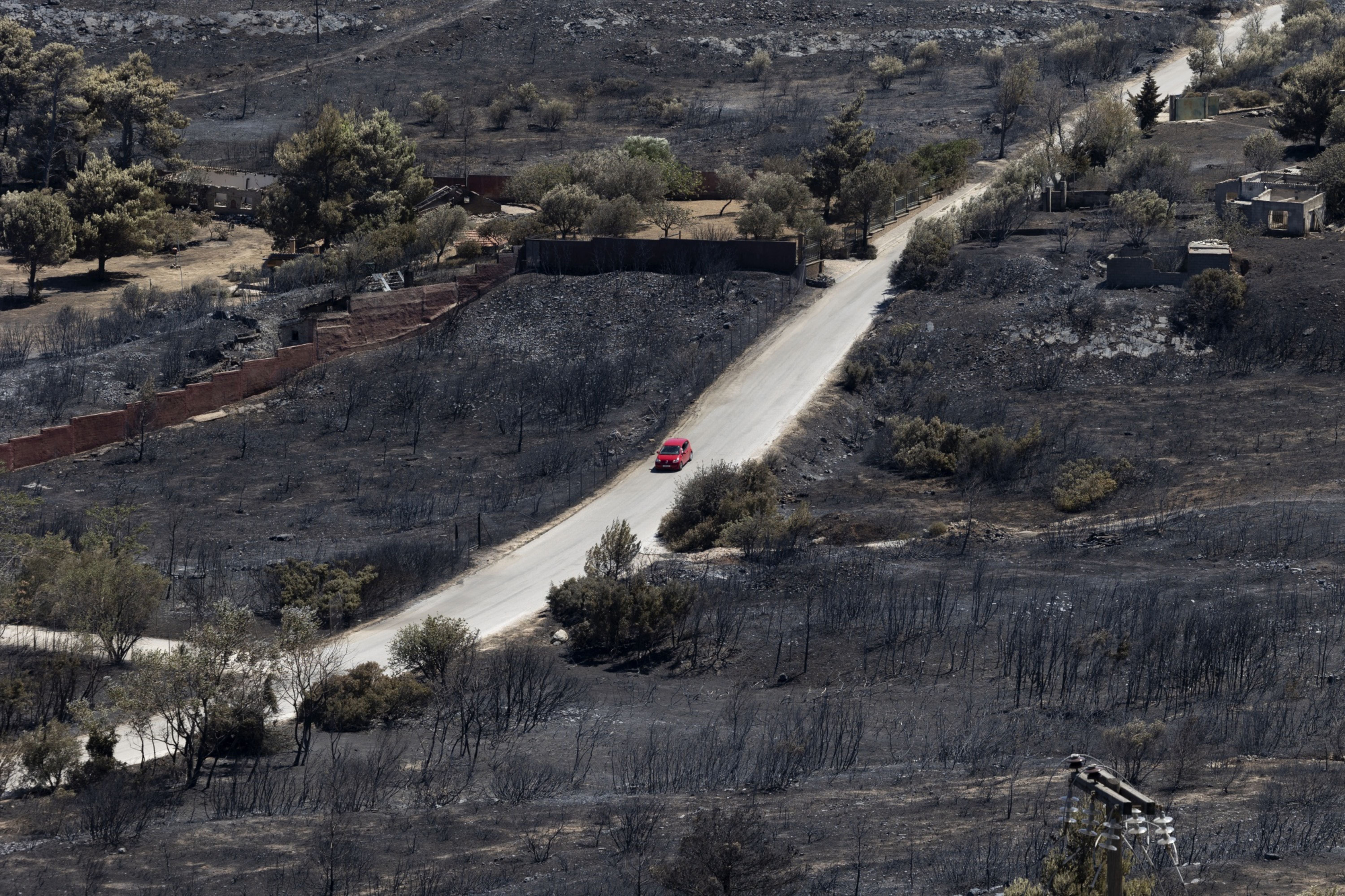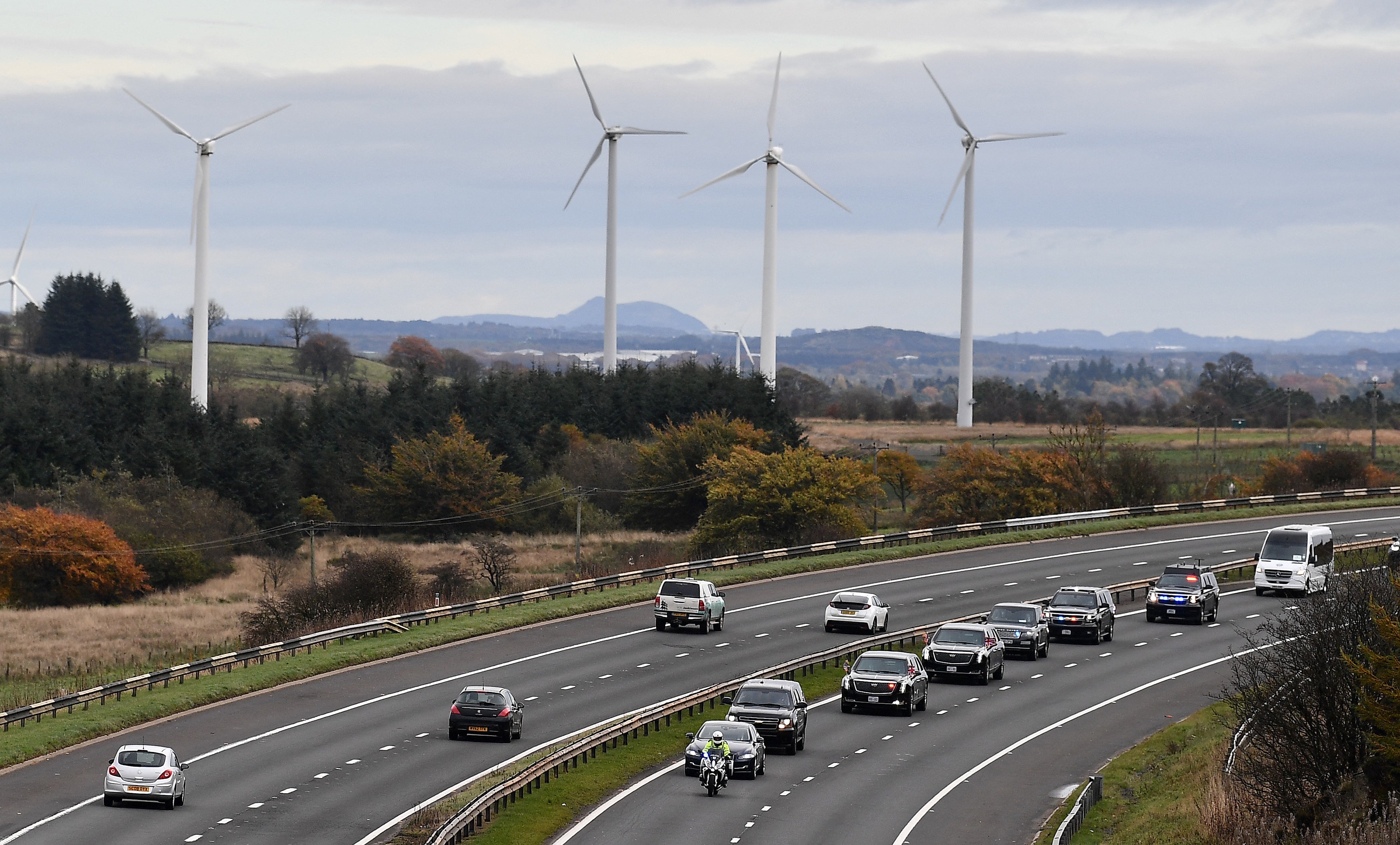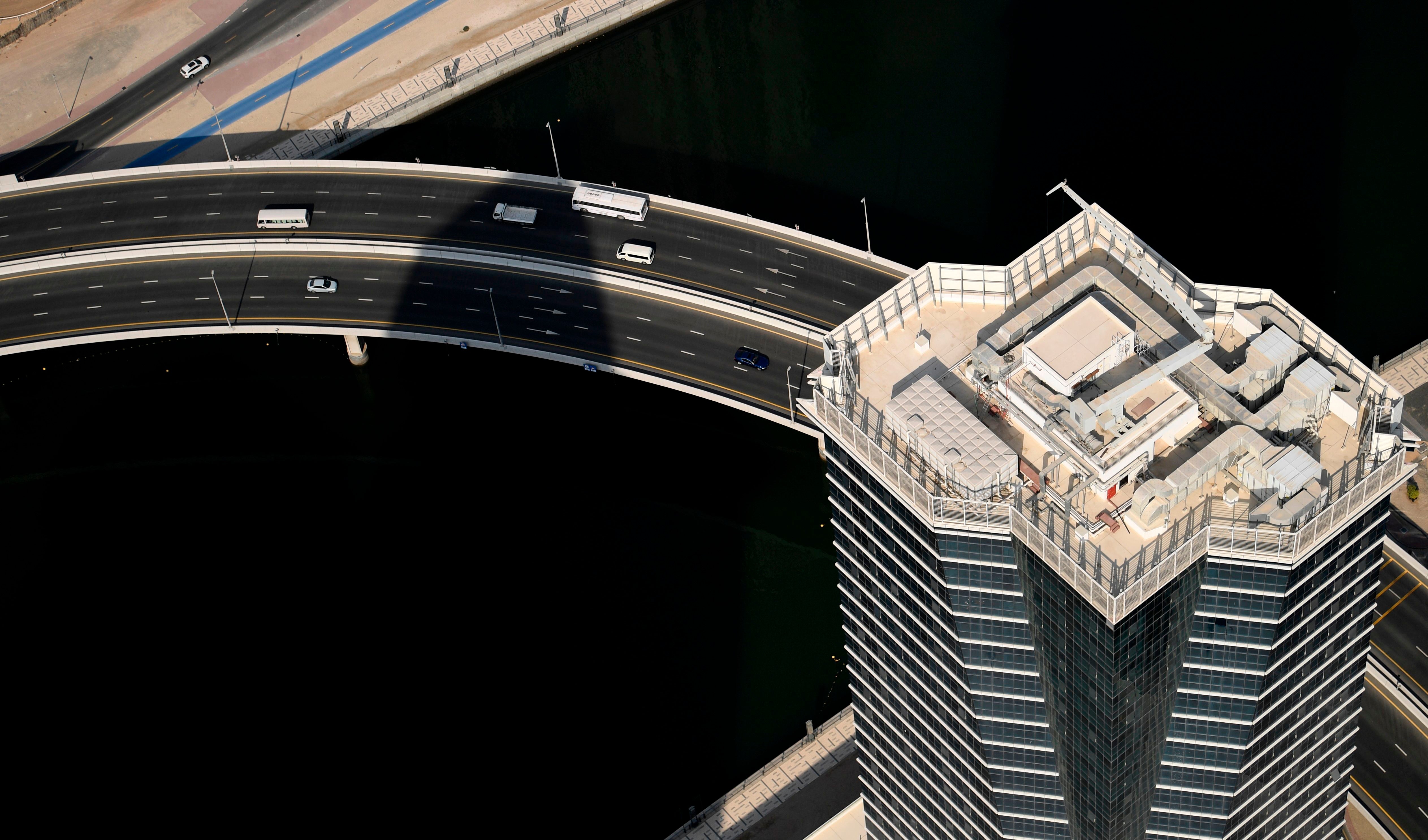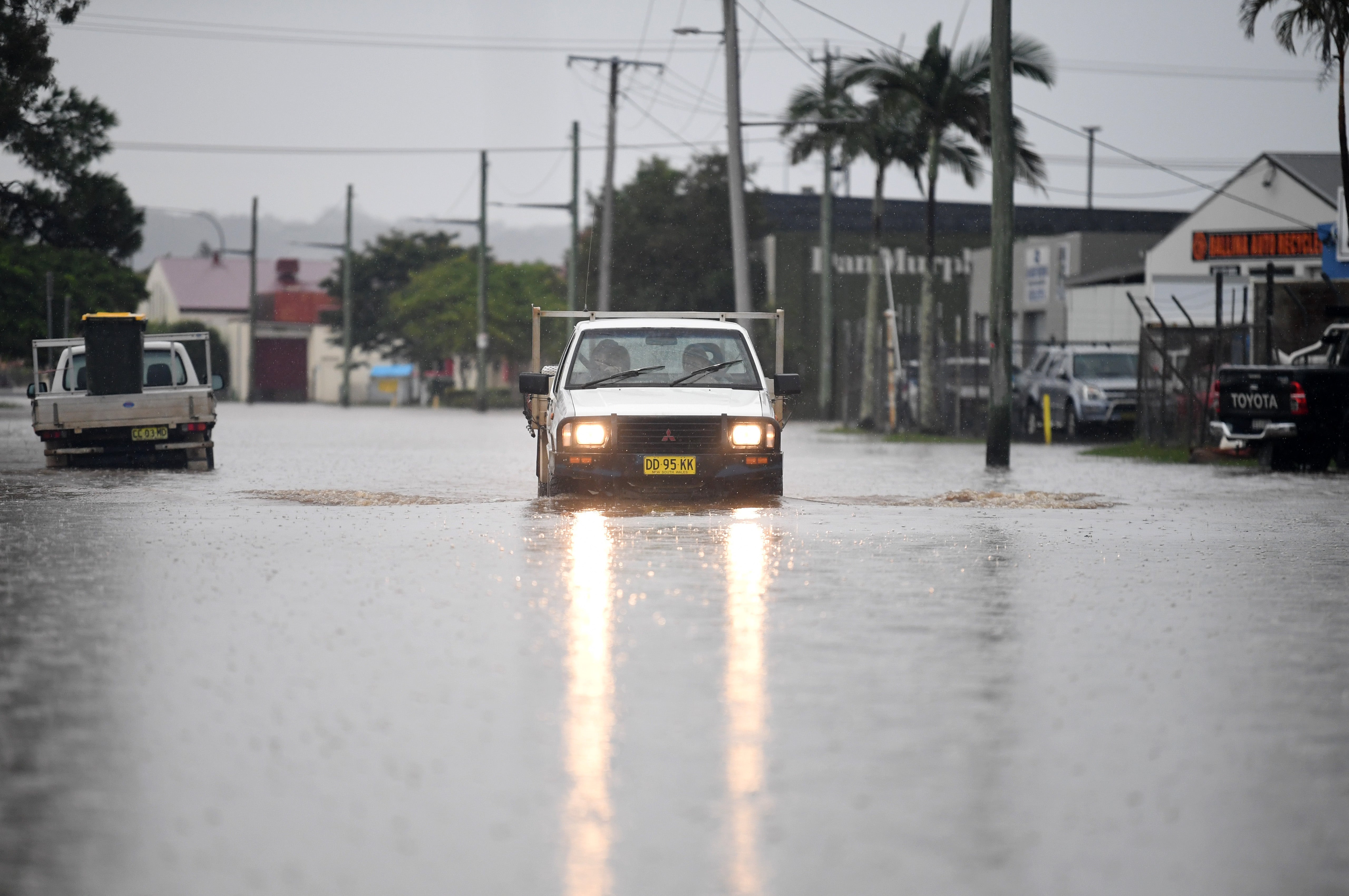
The historic heat wave that’s smothered western Europe this summer has caused transportation chaos. Railroad tracks warped, airport runways failed and key roads buckled. On 18 July, the busy A14 highway in Cambridge was shut down after developing a bizarre ridge that, while enticing to skateboarders, would be calamitous to fast-moving cars and their passengers.
As it happens, the same thing has been occurring across America, Australia, China and Africa. With average temperatures rising and heat waves becoming more frequent and intense, infrastructure and in particular roads are increasingly vulnerable to human-induced global warming. A 2017 study assessing the impacts of the climate crisis on critical infrastructure found that by 2080, heat waves would account for about 92 per cent of total hazard damage in Europe’s transport sector alone, in large part because the roads were built for cooler times.
Another study looked at data from weather stations used to determine the proper composition of local roads. It estimated around 35 per cent of them used materials unsuited to the actual climate. “The maximum temperatures that civil engineers have been using in design are now being surpassed much more frequently,” says Amit Bhasin, a director of the University of Texas Center for Transport Research. “That’s when the design starts falling apart.”
Supply chains depend on vehicles with wheels to get goods, people and pretty much everything else everywhere. Ships, trains and planes may do much of the long hauling, but those new jeans you ordered online will arrive at your door by van. As roads fail more often, it’s becoming clear how the economic cost of inaction could quickly add up.
The good news though is that the technology exists to sufficiently harden what’s arguably the most critical of infrastructure. The bad news is it will require government at all levels to spend a lot of money upfront.
Most if not all the ways global warming has changed the climate are having a deleterious effect on roads everywhere. Besides extreme heat, heavier rainfall and flooding triggered by the phenomenon can quickly erode highways and paved roads while obliterating those made of gravel and dirt. The cost of repair can be steep: The devastating floods in Australia between 2010 to 2014 cost the government an estimated $6.4bn in repairs to the road network.

In traditionally colder places, the problem is thawing. According to a report from the Canadian Climate Institute, more than half of the country’s winter roads in its northern regions, built on frozen lakes and rivers each fall, may in 30 years become unusable or impossible to build. Nearly all could be gone by 2080, cutting off whole regions from critical services. In Yukon, the cost of all-season roads largely made from gravel could total $1.6bn over the next two decades due to permafrost degradation. And a paper published in 2020 warned that those responsible for building and maintaining roads in permafrost areas in China face “significant engineering challenges.” Huge cracks are already appearing in the roads, making them unusable.
According to Claude Van Rooten, former president of the World Road Association (WRA), this summer’s European heat wave is the latest reminder of the growing discrepancy between the planet’s climate reality and what existing roadways can withstand. He says that in order to weatherproof roads for a fast-warming future, government officials everywhere have to substantially rethink the way they’re engineered.
“You try to make assumptions about what is going to happen, and climate change is changing those assumptions,” Van Rooten says.
The economic vulnerability posed by increased road damage is of particular concern in low- and middle-income countries, given the lack of resources and investment in wider networks
If sufficient steps to mitigate against temperature and precipitation changes aren’t taken, the bill for repairing and maintaining roads worldwide will skyrocket. Across Africa alone, the tab could reach $183.6bn by 2100, according to University of Colorado research. Prevention – as is so often the case–would be the cheaper route. In Canada, for example, selecting base materials and road structures to withstand the climate decades into the future could reduce costs by over 90 per cent, saving as much as $4.1bn annually by the 2050s.
Yet the cost of upkeep is only part of the economic threat: disruptions across road networks can have huge implications for global commerce and development. When the Leverkusen Bridge in Germany was closed between December 2012 to March 2013, the cost to the national economy was estimated at €80m. And the deadly 2018 collapse of the Morandi bridge in Italy cost the city of Genoa an estimated €6m a day as freight traffic was disrupted.
The economic vulnerability posed by increased road damage is of particular concern in low- and middle-income countries, given the lack of resources and investment in wider networks. Climate-caused damage to the global network can lead to serious “financial and economic costs to agencies, road operators and transport users,” says Caroline Evans, chair of the WRA’s Technical committee on climate change and resilience of road networks. “Resilience is therefore of high importance to ensure the socio-economic costs are reduced, and to ensure the reliable operation of road networks, mobility and supply chains.”

The only solution it seems-short of billions of delivery drones, flying trucks and teleportation – is to fix the way roads are made.
The majority are made from asphalt, essentially crushed rock mixed with bitumen binder, a fossil fuel residue. Asphalt is versatile, but bitumen can soften when it gets too hot. And because it’s black, asphalt absorbs light more easily and warms quickly. Under higher temperatures with traffic rolling over it, the mixture can deform into ruts and bumps. The higher the temperature, the more damage is done and the more repair is needed.
Many highways meanwhile are made up of concrete slabs. Concrete, made from cement, water and aggregate (rock, sand or gravel), is much lower maintenance than asphalt and lasts longer, but it’s more expensive. And in extremely high temperatures, it will expand, causing slabs to push against each other and become uneven. With the A14 closure in Cambridge, the concrete slabs underneath the asphalt top-layer buckled in the heat, pushing up a dangerous ridge.
There are already temporary, reasonably inexpensive fixes being employed to keep streets cooler. In Japan, the US and elsewhere, cities have been applying solar-blocking paint, for example. Then there are places like Dubai. Even though surface temperatures there reach in excess of 60C, local roadways don’t deform because highly engineered and very expensive polymers have been added to the bitumen.

There are indeed many bitumen blends, each with their own unique characteristics. Depending on how it’s formulated, polymer-modified bitumen can make an asphalt road more resistant to deformation so it won’t rut at increasingly higher temperatures. But local officials in most places have been using historical data to guide their bitumen recipes, and they haven’t kept pace with the reality of a warming climate.
According to Stephen Muench, a professor in the Civil Engineering Department at the University of Washington, a key part of the solution is shifting design to incorporate predictive climate models. Doing that will enable engineers to design something “more in line to what the roadway is actually going to endure.” Building roads, however, is largely the province of municipal authorities and elected officials.
“It’s not so much a technical but a sociopolitical problem,” says Ladd Keith, an assistant professor of planning and sustainable built environments at the University of Arizona. Too often, decision-makers build with “a short-term vision” while the cost of a road is spread out over its lifetime, he says.
“Our biggest challenge as engineers,” Van Rooten says, “is being able to provide resilient infrastructure at the lowest cost possible.” He points to Belgium as a counterpoint, where real investment can yield dividends later. City planners there reinforce concrete pavement with steel bars so they can withstand the most adverse environmental conditions. “It is more expensive as an investment,” he says, “but the lifetime is longer.”

Roads vulnerable to flooding can also benefit from such new strategies. Engineers in Australia have been trying to stabilise the materials inside asphalt. More than 1,000km of road across Queensland have been constructed with foamed bitumen, where air and water are injected into bitumen at high pressure. When the foam mixes with the other asphalt components, it produces a water-resistant layer.
Most of these techniques remain out of reach for developing nations, however. And there’s another problem: like asphalt, polymers and other chemicals that may help increase resilience are derived from fossil fuels.
“Engineering is also about doing this economically and in a responsible way,” Bhasin says. “My concern with many existing technologies is that they can perpetuate the fact that you have a bigger carbon footprint.”
If in the future we are going to have to engineer a lot more asphalts that are resilient to these high temperatures, and having only the options of additives, it’s going to be very expensive for us
There has been research into bio-binders as a replacement for petroleum-based bitumen binders. The most prominent area of research is lignin, a complex organic substance that acts as a bonding agent for cells and fibres in wood and most dry-land plants. Engineers in the Netherlands have laid a test road using a lignin-based binder, and similar testing is underway in Sweden .
In South Africa, where potholes cost drivers an estimated $3.4bn annually, engineers at the Council for Scientific and Industrial Research (CSIR) have been perfecting the use of rubber crumb-ground-up material made from waste rubber products like old tires – instead of virgin polymers. The same technique is now used in the US, Australia and the UK. Evidence suggests crumb rubber improves the fatigue properties of roads, delaying cracking. And in addition to using recycled material, the technique is cheaper than less sustainable technologies.
In 2020, Los Angeles laid a road that used recycled plastic rather than bitumen as a binder. TechniSoil, the company behind the technology, claims these types of roads are between eight and 13 times more durable than regular roads in lab tests. The company’s founder, Sean Weaver, contends they don’t see a decline in tensile strength until well over the highest projected temperatures.
The CSIR has also been exploring the possibility of adding recycled plastic to bitumen. The waste plastic is selected specifically so that its properties can withstand high road temperatures in South Africa. Early results indicate that plastic waste can provide “additional resistance” with regards to “permanent deformation or rutting at high South African road temperatures,” says Georges Mturi, manager of CSIR’s advanced material testing laboratories.
“If in the future we are going to have to engineer a lot more asphalts that are resilient to these high temperatures, and having only the options of additives, it’s going to be very expensive for us to construct our roads,” Mturi says. “We need to have cheaper alternatives.”
© The Washington Post







